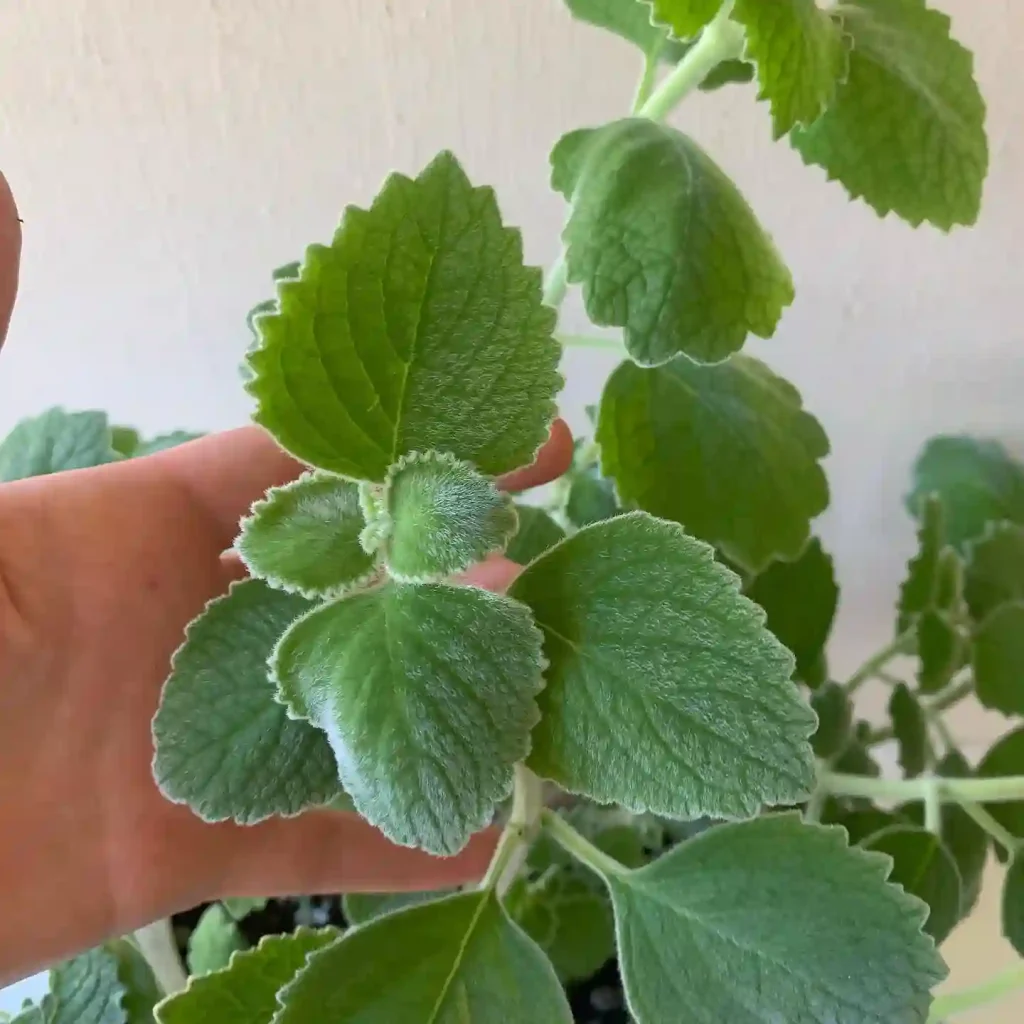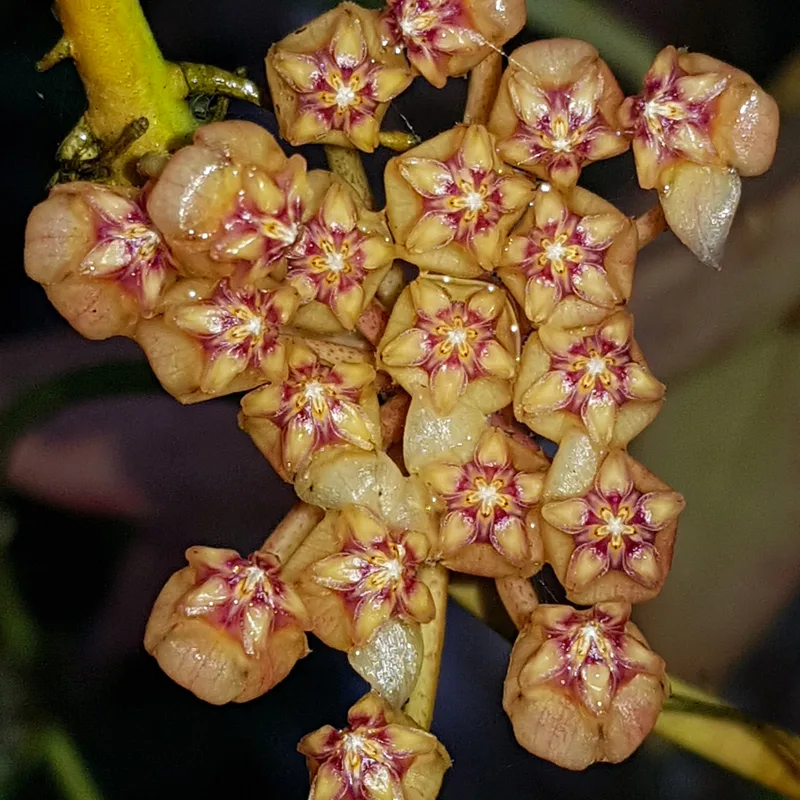
Mistletoe Cactus vs Pencil Cactus
The Mistletoe Cactus is a charming addition to my collection, with its trailing stems adorned in delicate white blooms that resemble tiny mistletoes, adding a whimsical touch to my plant shelf. In contrast, the Pencil Cactus stands tall and proud, its slender, cylindrical branches reaching skyward like pencils poised in an artist’s hand, creating a striking silhouette in my room.
How to propagate Mistletoe Cactus?
To propagate Mistletoe Cactus (Rhipsalis baccifera), take stem cuttings from a healthy plant. Allow the cut ends to callous over for a day or two. Once calloused, plant the cuttings in a well-draining cactus or succulent mix. Keep the soil slightly moist and place the cuttings in bright, indirect light. Roots should develop within a few weeks.
How to care for Mistletoe Cactus?
Here’s how to care for it:
Light:
- Prefers dappled sunlight or indirect indoor sunlight. Avoid harsh afternoon sun, especially in hot climates, which can scorch the leaves.
- Not enough light will cause the plant to stretch, lose its vibrant colors, and develop fewer leaves.
Watering:
- Water regularly, allowing the soil to nearly dry out in between. Overwatering is a major threat to Mistletoe Cactus.
- A good rule of thumb is to water when the top inch of soil feels dry to the touch.
- Watering frequency will vary depending on factors like light, humidity, and pot size.
Soil and Potting:
- Use a well-draining potting mix. Aroid mix or a standard potting mix with added perlite or orchid bark works well.
- Ensure your pot has drainage holes to prevent waterlogging.
Temperature and Humidity:
- Mistletoe Cactus prefers warm temperatures between 60-80 degrees Fahrenheit (15-27 degrees Celsius).
- It enjoys moderate to high humidity (around 40-80%). If the air is dry, mist the plant regularly or use a pebble tray filled with water.
- Avoid cold drafts and sudden temperature fluctuations.
Fertilizing:
- Apply a balanced fertilizer diluted to half strength during the growing season (spring and summer) once a month.
- Avoid fertilizing in fall and winter.
Pruning:
- Prune your Mistletoe Cactus to maintain its shape and size. You can cut back stems at the base to encourage branching.
- Use sterilized pruning shears to make clean cuts.
Pests and Diseases:
- Watch out for common houseplant pests like mealybugs, spider mites, and scale. Neem oil solution is an effective way to deal with these.
Additional Tips:
- Mistletoe Cactus can be propagated by stem cuttings. Take a healthy stem section with a few nodes, allow the cut end to callous over for a day or two, and then plant it in a well-draining potting mix.
- Repot your Mistletoe Cactus every 2-3 years or when the plant outgrows the pot.
By following these simple steps, you can ensure your Mistletoe Cactus thrives for many years to come!
Is Mistletoe Cactus poisonous?
Mistletoe Cactus is considered non-toxic to humans and pets. However, it’s always a good idea to keep houseplants out of reach of pets and children to avoid any accidental ingestion or potential allergic reactions.
Where to buy Mistletoe Cactus?
Mistletoe Cactus can be purchased from local nurseries, garden centers, and specialty plant shops. It’s also available from online plant retailers and marketplaces such as Etsy, Amazon, and dedicated succulent and cactus sellers.
Does Mistletoe Cactus have thorns?
No, Mistletoe Cactus does not have thorns. Unlike many cacti, it has smooth, spineless stems, making it a safe and easy-to-handle plant.
How often to water Mistletoe Cactus?
Water Mistletoe Cactus when the top inch of soil feels dry, typically every 1-2 weeks. The frequency may vary depending on the temperature, humidity, and light conditions. During the winter months, reduce watering to prevent root rot.
What temperatures should a Mistletoe Cactus be?
Mistletoe Cactus prefers temperatures between 60-80°F. It can tolerate slightly cooler temperatures but should be protected from frost and cold drafts. During the winter, keep it in a warm, sheltered location indoors.
When does Mistletoe Cactus bloom?
Mistletoe Cactus typically blooms in late winter to early spring. It produces small, white to pale yellow flowers that are followed by small, berry-like fruits. Blooming can vary based on growing conditions and the health of the plant.
When to repot Mistletoe Cactus?
Repot Mistletoe Cactus every 2-3 years or when it outgrows its current pot. The best time to repot is in the spring when the plant is beginning its active growing season. Choose a slightly larger pot with good drainage and refresh the potting mix.
Why is my Mistletoe Cactus dropping leaves?
Mistletoe Cactus may drop leaves due to several reasons, including overwatering, underwatering, low humidity, sudden temperature changes, or insufficient light. Ensure you’re providing the right care by maintaining consistent watering, humidity, and light levels. Check the soil and adjust watering practices if it’s too wet or too dry.
If i die, water my plants!



